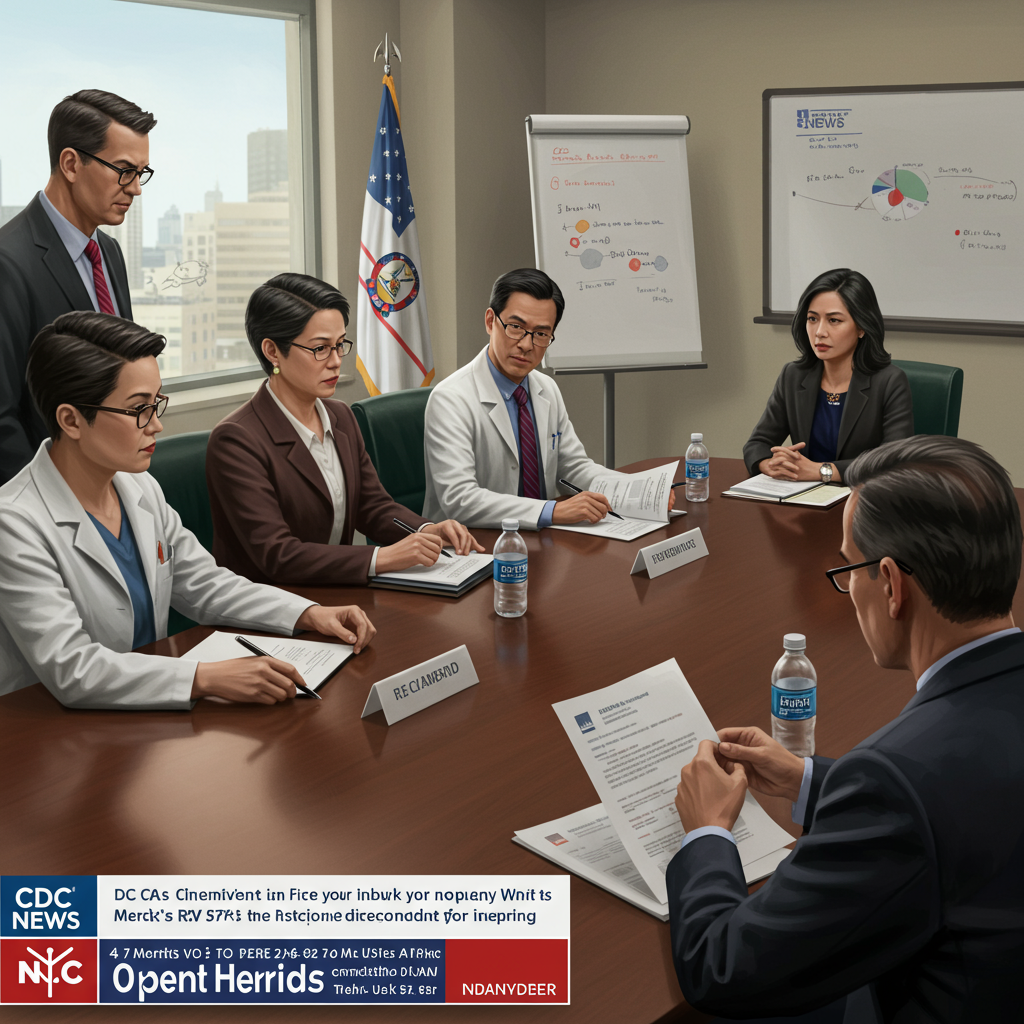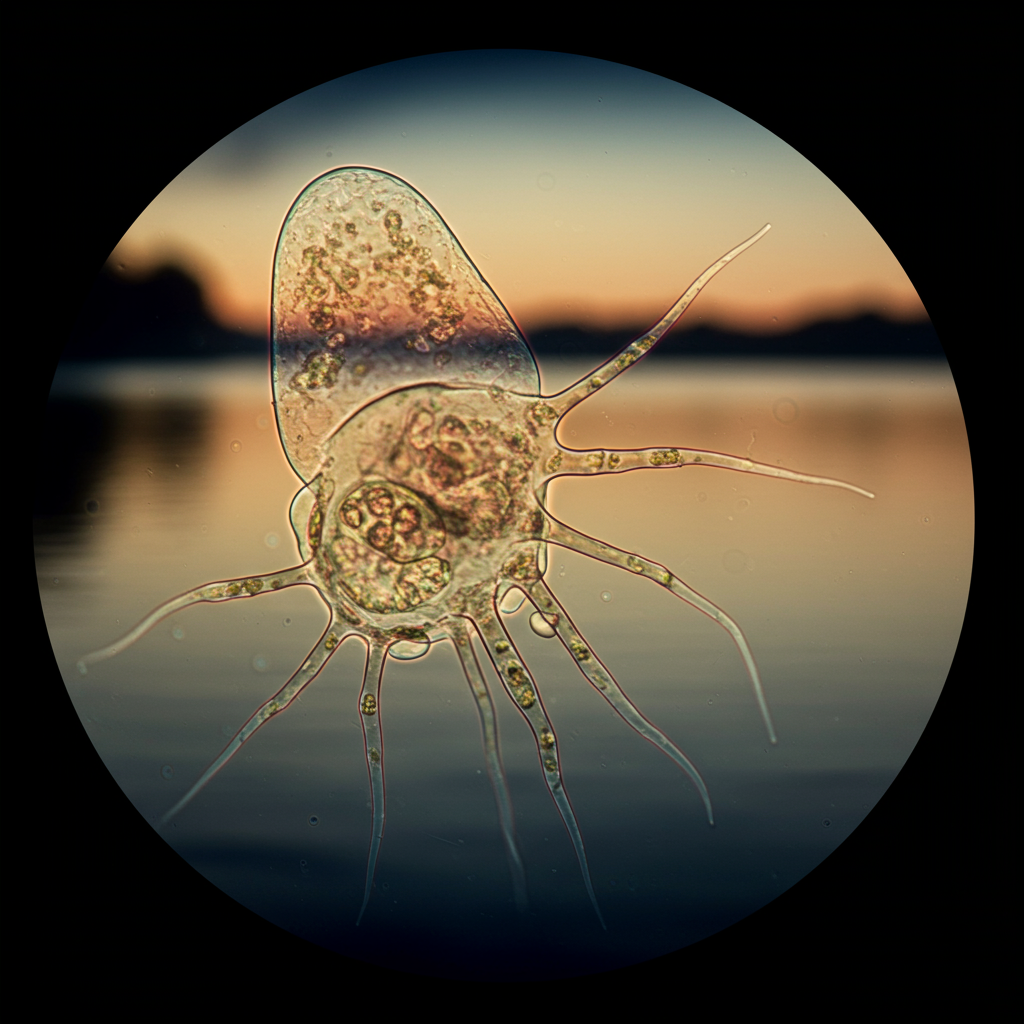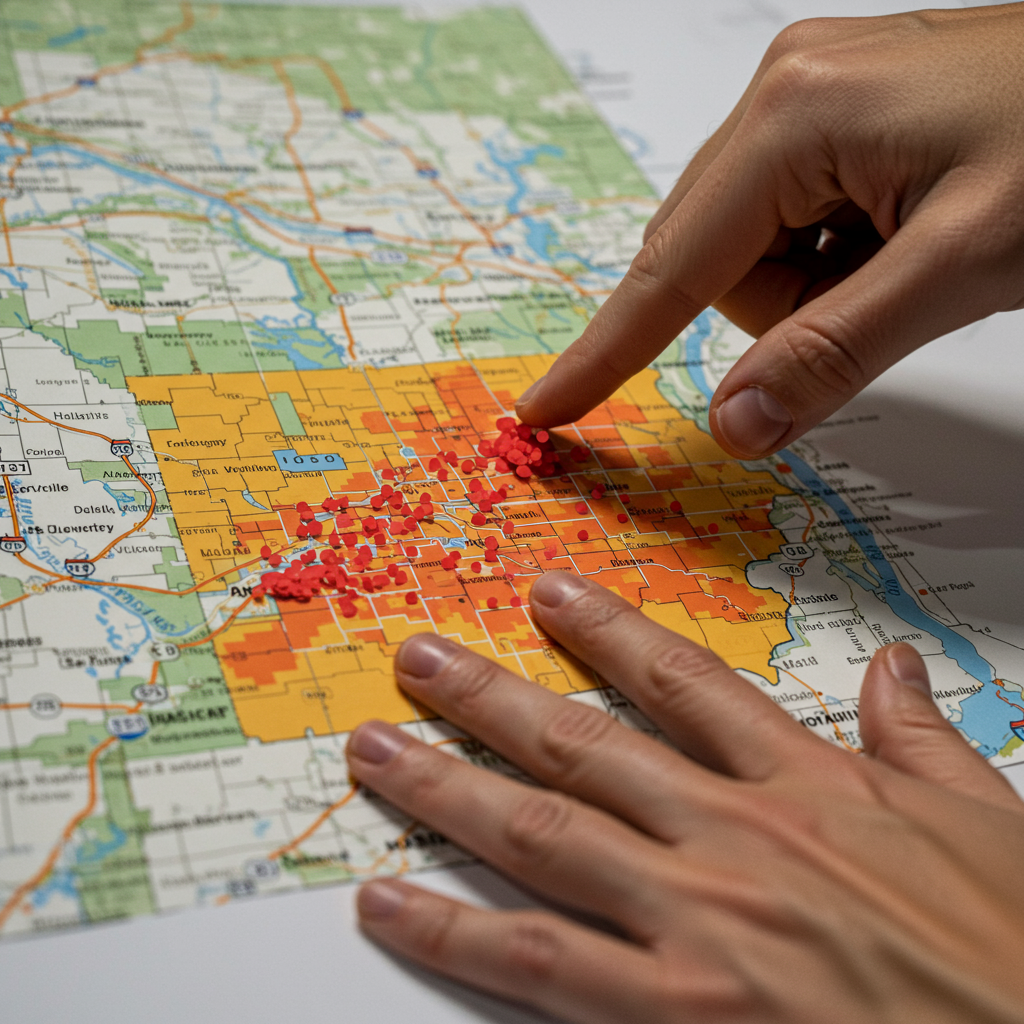Protecting infants from Respiratory Syncytial Virus (RSV), a leading cause of hospitalization in young children, just gained a powerful new tool. A key advisory committee for the Centers for Disease Control and Prevention (CDC) recently voted to recommend Merck’s new monoclonal antibody therapy, known as enflonsia (clesrovimab), for use in babies. This significant development follows the therapy’s approval by the Food and Drug Administration (FDA) earlier this month and represents a crucial step towards making enhanced RSV protection widely available for vulnerable infants across the United States.
The Advisory Committee on Immunization Practices (ACIP), the panel advising the CDC, cast its vote on Thursday, June 26, 2025. The recommendation specifically targets infants younger than eight months old as they enter their first RSV season, which typically occurs during the fall and winter months. Enflonsia is designed to provide immediate, passive immunity, directly delivering protective antibodies to the baby’s system rather than prompting their immune system to build its own defense like traditional vaccines.
A New Shield Against RSV for Infants
Enflonsia is administered as a single shot into the baby’s muscle, typically in the thigh. The dose remains the same regardless of the infant’s weight, simplifying administration. For optimal protection, it is ideally given within the first week of life. A CDC representative noted the potential benefit of administering it directly in the birth hospital, as it ensures protection begins early, especially for newborns who may not have a primary care visit scheduled soon after birth.
This new Merck therapy is the second monoclonal antibody product available to shield babies from severe RSV disease. It joins Sanofi and AstraZeneca’s Beyfortus (nirsevimab), which was approved earlier and protects children up to 24 months for their first two RSV seasons. Experts highlight the advantage of having multiple products with differing antibody structures. This diversity can be beneficial for managing potential resistance mutations in the virus and helps prevent supply shortages, which were experienced with Beyfortus during the 2023-2024 RSV season.
Promising Effectiveness Data
Clinical trial data presented for Enflonsia indicated substantial protection against severe RSV illness. Phase 2b/3 trials demonstrated that the therapy prevented severe RSV disease for up to 150 days after administration. More specifically, data showed Enflonsia reduced the rate of medically attended lower respiratory tract infections caused by RSV by over 60%. It also dramatically cut the incidence of RSV hospitalization by more than 84%, and other analyses showed approximately 85% effectiveness against hospitalization compared to a placebo.
These results underscore the potential of this new RSV shot for babies to significantly impact public health. RSV infections, while often causing only cold-like symptoms in older children and adults, can be particularly dangerous for infants. Their small airways can become severely inflamed, leading to serious complications like bronchiolitis or pneumonia and frequently requiring hospitalization. RSV is, in fact, the most common reason for hospitalization in infants in the U.S., sending between 58,000 and 80,000 children under five to the hospital annually.
Navigating the Recommendation Process and Panel Dynamics
The ACIP’s recommendation is a vital step but requires final approval from either the CDC director or the U.S. Health and Human Services Secretary to take effect. Currently, there is no confirmed CDC director, placing the decision with Health Secretary Robert F. Kennedy Jr. Uncertainty surrounds this final approval, as Secretary Kennedy previously left several recommendations from an earlier ACIP meeting in limbo while approving others.
The vote on Enflonsia was also notable as the first significant decision by a newly appointed, seven-member ACIP panel. Secretary Kennedy had controversially dismissed the entire previous 17-member committee earlier in June, citing a need to rebuild confidence. However, critics, including medical associations like the American Academy of Pediatrics, have expressed concern that many new members lack extensive experience in immunization science, leading some organizations to distance themselves from the committee’s guidelines.
Debate and Dissent on the Panel
The discussion leading up to the 5-to-2 vote on Enflonsia revealed some tensions within the reconstituted committee. One member, Dr. Retsef Levi, an MIT professor, questioned the clinical trial data for both Enflonsia and Beyfortus. He expressed concern about deaths that occurred in the trials, suggesting there appeared to be more deaths in groups receiving the monoclonal antibodies. However, officials from the CDC, FDA, and Merck countered these concerns. They explained that all deaths in clinical trials are thoroughly investigated to determine any link to the intervention and confirmed that in these cases, no connection was found.
Despite these assurances, Dr. Levi remained unconvinced and voted against the recommendation. He was joined by Vicky Pebsworth, associated with an organization known for vaccine skepticism. Safety data presented by the CDC indicated no increased risk of fever or severe reactions compared to a placebo. Primary adverse events reported were complications experienced by infants who still contracted RSV despite receiving the antibody shot. Another panel member, Dr. Cody Meissner, a pediatrician, strongly supported the new antibody therapies, describing them as “truly remarkable products” that are “safe and effective” and a “spectacular accomplishment” with enormous public health implications.
Ensuring Access: The VFC Program
In a separate, unanimous vote held the same day, all seven ACIP members agreed to recommend that Enflonsia be included in the Vaccines for Children (VFC) Program. This program is essential for equitable access, covering the cost of recommended vaccines and monoclonal antibodies for eligible children. The VFC program serves children who are uninsured, covered by Medicaid, Native American, or Alaska Native, reaching just over half of U.S. children who access immunizations through this avenue. Adding Enflonsia to VFC will be critical for ensuring that cost does not become a barrier to this important layer of RSV protection for babies.
It’s important to understand that while the monoclonal antibody shot provides direct antibodies, another strategy exists for protecting newborns: maternal vaccination. A Pfizer RSV vaccine (Abrysvo) is available and can be given to pregnant individuals late in their pregnancy. Antibodies generated by the mother then cross the placenta, offering protection to the baby in the first few months of life. Health authorities generally advise that babies should receive protection either through maternal vaccination or a newborn antibody shot, but typically not both. However, certain situations may still warrant an antibody shot even if the mother was vaccinated, such as if the mother’s vaccination status is unknown, if she received the vaccine less than 14 days before birth, or if she has medical conditions that might hinder antibody transfer to the fetus.
Parents and caregivers of infants born during or entering their first RSV season should discuss all available options, including maternal vaccination and the new RSV shot for infants, with their healthcare providers to determine the best protective strategy for their child. The availability of multiple effective tools like Enflonsia and Beyfortus, alongside maternal vaccination, marks a significant advancement in the fight against severe RSV disease in the most vulnerable population.
Frequently Asked Questions
What is Enflonsia and how does it protect babies from RSV?
Enflonsia, also known as clesrovimab, is a new preventative therapy approved by the FDA and recommended by the CDC’s advisory panel for infants. It’s a monoclonal antibody, which means it’s a lab-made protein designed to mimic the body’s own antibodies. Instead of triggering the baby’s immune system to make antibodies like a vaccine does, Enflonsia directly provides protective antibodies. This offers immediate defense against severe illness caused by Respiratory Syncytial Virus (RSV) during an infant’s crucial first RSV season.
Who is eligible for Merck’s Enflonsia RSV shot under the new CDC recommendation?
The CDC advisory panel recommended Enflonsia for babies younger than eight months old. This includes infants who are born during or are entering their first RSV season, which typically runs from fall through winter. The panel also recommended adding Enflonsia to the Vaccines for Children (VFC) Program. This means that eligible children, including those who are uninsured or covered by Medicaid, should have access to the shot at no cost, expanding its reach to many families across the U.S.
How does Enflonsia compare to other ways to protect my baby from RSV?
Enflonsia is one of several tools now available. It’s a monoclonal antibody shot, similar to Beyfortus (nirsevimab), which is already on the market and can protect infants for their first two RSV seasons. Both types of shots provide direct antibodies. Another option is a maternal RSV vaccine (like Pfizer’s Abrysvo) given to the pregnant parent, allowing antibodies to transfer to the baby before birth. While generally a baby needs protection via either maternal vaccine or an antibody shot, not both, healthcare providers can help determine the best approach based on the baby’s age, the mother’s vaccination status, and other individual factors.
Protecting infants from RSV is paramount given the serious risks it poses. The recent recommendation for Merck’s Enflonsia adds a powerful new tool to the arsenal of preventative measures. While formal adoption by the CDC Director or Health Secretary is still needed, and supply availability for the upcoming RSV season will be crucial, this marks significant progress. Coupled with existing options like Beyfortus and maternal vaccination, parents now have more ways than ever to discuss critical RSV protection for babies with their doctors, aiming to reduce hospitalizations and keep infants healthy.
Word Count Check: ~1180 words




